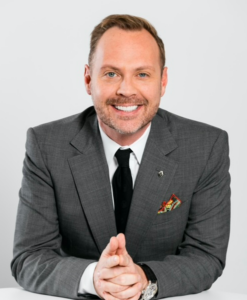Employee resource groups can unify your workforce. Here’s how.
Comms can help set ERGs up for success.

Most communicators understand that employees are what gives their company its identity and makes it a great place to work. But in most workplaces, additional resources and people power are also needed to help float employee desires and initiatives to a place of prominence. That’s where employee resource groups (ERGs) come in.
ERGs serve several purposes, including helping to raise the profile of diversity, equity and inclusion (DE&I) programs and creating a space for affinity groups within an organization to share their perspectives. When implemented effectively, ERGs also serve as a unifying force for all employees across a company.
Here’s how you can play an increased part in making that happen.
A tie that binds and a unique comms role
It may prove difficult to get far-flung members of an organization on the same cultural page, especially in a dispersed workforce. But ERGs can help fill in the potential cultural gaps that distance creates.
Lexie Chapman, senior manager, global communications at Under Armour, said that teammate resource groups (or TRGs, in this case) emphasize inclusion as a means to keep the global organization tightly knit. Under Armour’s TRGs include nearly 2,000 employees worldwide.
“Under Armour’s nine TRGs are the heartbeat of our DE&I strategy and represent the diversity and passion of our teammates across the globe,” she said. “These teammate-led, self-directed networks foster a deep sense of belonging in (and out of) the workplace for both their members and allies.”
While a comms function traditionally helps promote the work that ERGs do to unify companies and uplift voices, Under Armour’s TRG structure gives each group its own communications arm.
“Within each TRG structure, communication positions have been appointed because we understand the importance of driving clear and consistent messaging to our teammates, communities, and key stakeholders,” Chapman said. “In partnership with Under Armour’s internal communications team, these TRG-specific comms leads help deliver streamlined communications that keep us accountable in delivering against our shared goals to drive diversity, equity and inclusion.”
Hearing from more perspectives allows you to be more inclusive and holistic in your communications, while Chapman’s focus on how shared drives accountability ultimately amplifies the success of internal comms. That’s a great strategy for fostering a sense of unity among your workforce.
Getting leaders on board and a lift upwards
In a successful org, leaders are empowered to speak to issues and ideas that unify all employees. Recognition of ERG perspectives helps provide a clearer communication strategy for leaders. You are the connector who makes this happen.
“Communicators can be incredibly helpful in crafting compelling narratives that resonate with leadership by framing key initiatives in a way that aligns with the organization’s broader strategic goals and values,” said Johnna Muscente, vice president of communications and PR at Corcoran.
“In many instances, having a senior member of a communications team on the steering committee of an ERG can be a seamless way to ensure consistent alignment with leadership.”
Senior leadership and comms need to align for ERGs to reach their full potential. That takes a lot of listening to what perspective ERGs have to share and synthesizing that knowledge alongside the organization’s mission and core values.
“Comm pros and leaders need to listen and truly hear the voice of their ERGs, and understand that it’s their job to help the ERGs achieve their goals,” said communications and DE&I consultant Christopher Pinto. “It’s hard for people to separate how they feel from the work that needs to be done. When we listen, we allow everyone to share their lived experiences, and chart the course forward.”
ERGs also stand to create a more positive culture within the workplace by raising voices and differing perspectives.
“ERGs can improve company culture for everyone. Often, the suggestions raised by employee resource groups benefit all employees,” said Amanda Ponzar, chief communications and marketing officer for CHC: Creating Healthier Communities. “Examples include advocating for remote work or a more flexible workplace, parental leave or adoption benefits, health and wellbeing efforts, time off for voting and civic engagement, and other positive changes.”
A day-to-day difference-maker
The ultimate measure of success for an ERG is making a difference in the lives of employees on a day-to-day basis. But that takes a lot of self-evaluation. For communicators, that means acting with intention.
“To be a successful ERG, you must recognize your own unconscious bias and ask — who else needs to be at this table?” Pinto said. “Who have we not heard from? Who needs to be involved and how do we get them on board?”
Comms pros should look at ERGs with the intention of raising the groups voice. Doing so effectively helps bring the group’s mission into clearer view for the rest of the company and create a more unified front.
“It’s incumbent on communicators and ERG leaders to look around and pull fellow employees and leaders into the group that has a viewpoint that’s not being heard,” said Pinto, “or a leader into the group that will help the ERG achieve their mission.”
We’ll be exploring more ERG strategies during Ragan’s Employee Communications and Culture Conference in Chicago on April 16-18. Register now!”







